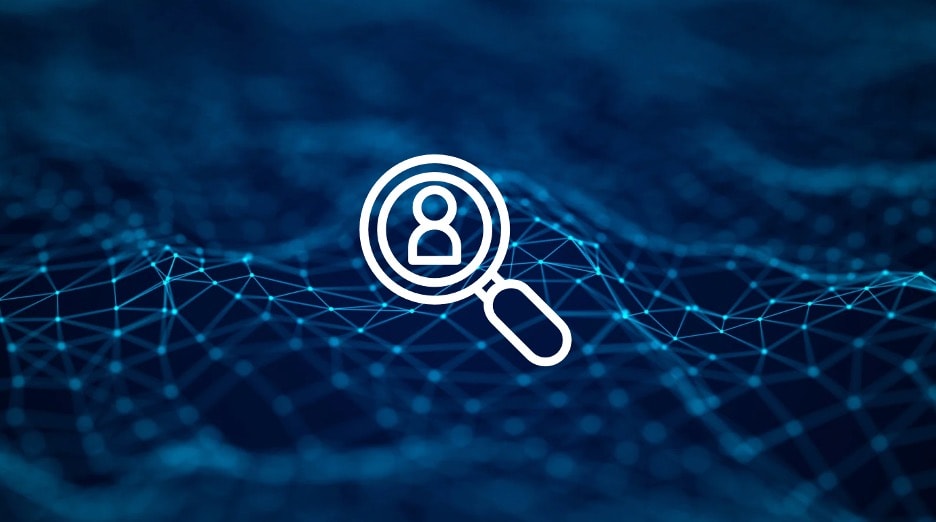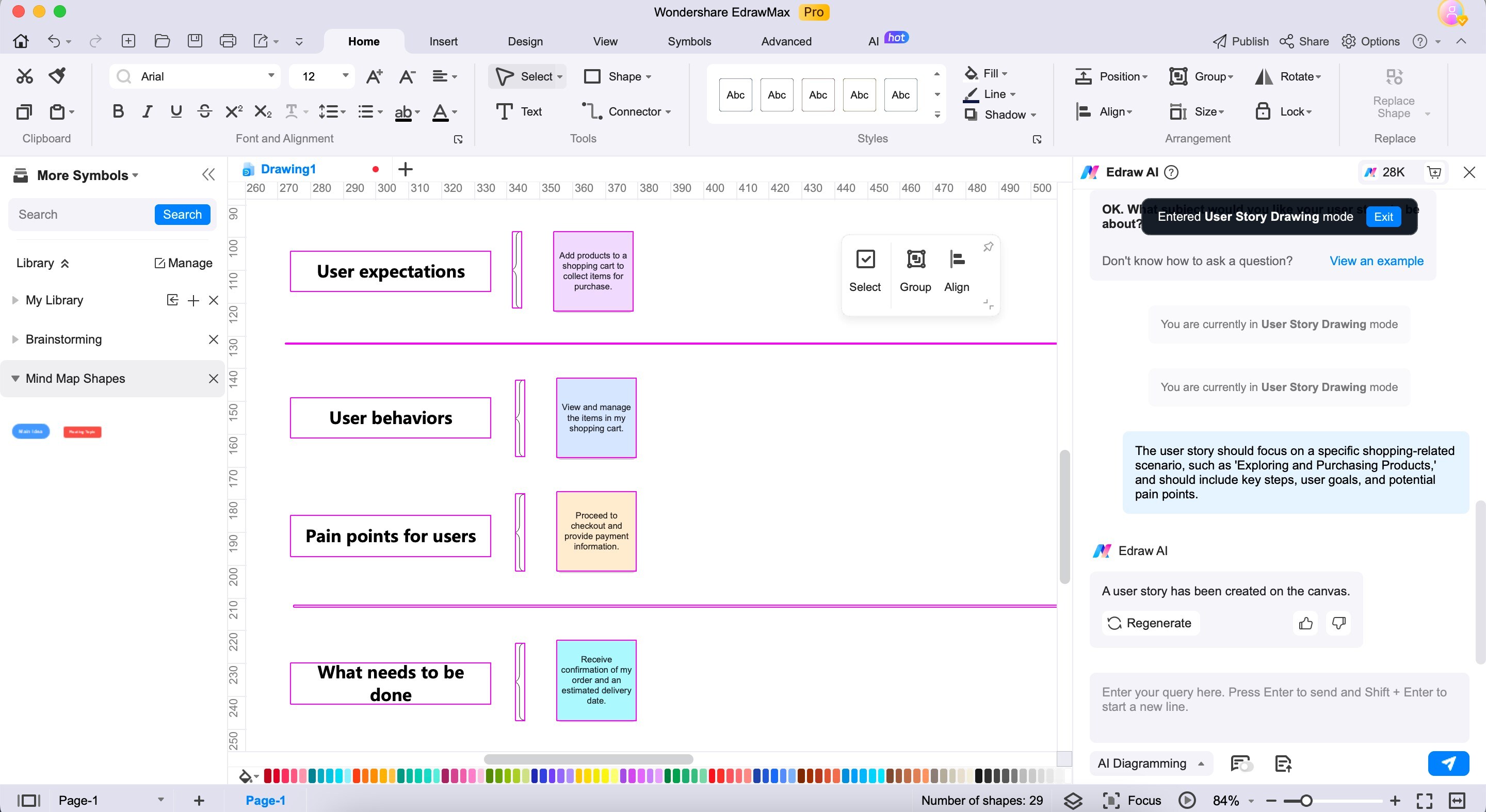User research plays a pivotal role in the world of product development. It's the compass that guides creators towards crafting products that users truly need and love. In recent years, the integration of AI has revolutionized the user research landscape, making the process more efficient and insightful.
This article will explore the critical importance of user research in product development. It will also show how AI transforms how people understand and cater to user needs.

In this article
Part I. What Is User Research?
User research gathers and analyzes information about a product's target audience's needs, preferences, behaviors, and pain points. Its significance lies in its ability to bridge the gap between creators and users, ensuring that products are designed with the end-user's needs at the forefront.
Here are the usual key objectives and benefits of conducting user research:
- Understanding User Needs. User research helps uncover what users truly want from a product, allowing developers to prioritize features and improvements that align with these needs.
- Improving User Experience. By empathizing with users, businesses can enhance the overall user experience, making products more intuitive and user-friendly.
- Minimizing Risk. Research reduces the risk of building a product that doesn't resonate with the market, potentially saving time and resources.
- Validating Ideas. It provides a data-driven approach to validating product ideas, ensuring real-world relevance.
- Enhancing Innovation. User research fosters innovation by identifying unmet needs and uncovering new opportunities for product development.
User research can improve its benefits when integrated with AI technologies. It does this by processing large datasets and giving you insights efficiently. Explore how AI contributes to this process in the following sections.
Part II. Introduction to AI in User Research
AI has emerged as a game-changer in user research. It brings a wave of new and transformative capabilities. At its core, AI encompasses a set of technologies that enable machines to replicate human intelligence, learning, and problem-solving. AI can analyze vast amounts of data with remarkable speed and precision when applied to user research. This changes how researchers can quickly respond to user trends and behavior.
- Speed and Efficiency. AI can process and analyze user data at a pace that's simply unattainable for humans. That means quicker access to insights, allowing businesses to make more informed decisions in less time.
- Scale. With AI, user research can scale to accommodate large and diverse user bases. It can analyze data from millions of users, deriving insights representing a broader audience.
- Unbiased Analysis. AI operates without inherent biases, ensuring data analysis remains objective and free from human predispositions.
- Pattern Recognition. AI excels at identifying patterns and trends in user behavior, helping businesses understand what drives user engagement and satisfaction.
- Predictive Analytics. AI can predict future user behavior and preferences based on historical data, aiding in proactive product development.
- Natural Language Processing (NLP). NLP-powered AI can process and make sense of textual user feedback, such as reviews and comments, providing deeper insights into user sentiments.

In the following sections, we will delve into specific AI applications within user research and explore how these advantages translate into actionable insights that drive product development forward.
Part III. Use Cases of AI in User Research
User research focuses on understanding user needs and experiences. AI technologies have been offering valuable insights and efficiency. Here are some notable use cases:
User Behavior Analysis
Understanding how users interact with a product is crucial for improvements. AI can analyze user behavior data, tracking clicks, navigation paths, and engagement patterns. It identifies trends and anomalies, helping businesses optimize their interfaces and features.
Sentiment Analysis
Sentiment analysis employs AI to evaluate user feedback and reviews, determining whether they express positive, negative, or neutral sentiments. This helps businesses gauge user satisfaction, identify pain points, and pinpoint areas for improvement.
User Experience Testing
AI-driven usability testing can simulate user interactions with a product. It can identify usability issues and provide heatmaps through recording user sessions. The feature assists in fine-tuning design elements for a better user experience.
Diagramming (Generating User Story Templates and User Profile Templates)
Now, dive deeper into this intriguing use case of AI, illustrated using Edraw AI as an example:
Imagine a scenario where you're a product manager or a UX designer. You are tasked with creating user stories or profiles for a new project. Traditionally, this process involved manual effort and creativity, often consuming valuable time and resources. However, AI is transforming this task. See how this works through Edraw AI.
Edraw AI is the AI assistant offered by Wondershare EdrawMax. In user research, Edraw AI can generate user stories and profile templates effortlessly. Here's how it works:
- Prompting AI. Users provide a prompt or brief description of the project and any specific requirements or objectives.
- AI Processing. Edraw AI's powerful algorithms analyze the input and understand the context of the project, including its goals, target audience, and scope.
- Template Generation. Based on this analysis, Edraw AI automatically generates user story templates and user profile templates tailored to the project's unique needs.
- Customization. Users can then review and customize these templates, ensuring they align perfectly with the project's requirements.
Take a closer look at how it works through some application screenshots. You start by entering a prompt and any project-specific details. Edraw AI processes your input and generates user story and profile templates based on the project context. See some sample results below:
AI-Generated User Story Diagram
As you can see, the AI effortlessly created a user story diagram outlining their needs, expectations, and issues.

AI-Generated User Profile Diagram
Now, in this example, AI has created a user profile. You can make this more specific by feeding the AI with actual user information. This way, you can easily create user profiles that your research team can follow.

This AI-powered feature accelerates the initial stages of project planning. It also ensures consistency in user stories and profiles. It's a prime example of how AI streamlines complex tasks, making the user research and product development processes more efficient and effective.
By incorporating AI tools like Edraw AI, businesses can save time and resources while maintaining high quality in their user research and project planning endeavors.
Part IV. Potential Challenges and Considerations
While AI brings substantial advantages to user research, it's essential to acknowledge and address potential limitations. Here are some key considerations:
- Data Quality: AI heavily relies on data. If the input data is biased, incomplete, or unrepresentative, it can lead to skewed results. Ensuring data quality is crucial for reliable insights.
- Interpreting Context: AI may struggle to fully understand nuanced contexts or cultural differences. Human oversight is often necessary to correctly interpret certain user behaviors or sentiments.
- Privacy and Ethics: Gathering and analyzing user data must be done with utmost respect for confidentiality and ethical guidelines. Businesses must prioritize user consent and data protection.
- Over-Automation: Over-reliance on AI can lead to a disconnect from users' actual experiences. Human empathy and qualitative research should complement AI-driven insights.
- Cost and Accessibility: Implementing AI tools can be costly, and not all businesses may have the resources to do so. Ensuring accessibility and affordability is essential for widespread adoption.
- Algorithm Bias: AI algorithms can inherit biases from the data they are trained on, leading to unfair or discriminatory outcomes. Regular algorithm audits and bias mitigation are essential.
By being mindful of these challenges and taking proactive steps to address them, businesses can harness the power of AI in user research while maintaining a balanced and ethical approach.

Part V. Future Trends and Developments
AI is constantly evolving, and new technologies are continuously emerging to enhance user research further. Some promising developments include:
- AI-Powered Predictive Analytics. Advanced predictive models will enable businesses to foresee user trends and demands with even greater accuracy, allowing for proactive adjustments to products and services.
- Conversational AI for Feedback. AI chatbots and voice assistants will play a more significant role in gathering real-time user feedback, making it easier for users to provide input.
- AI-Enhanced Visual Analytics. AI will excel in analyzing visual content, such as images and videos, offering more profound insights into user reactions and preferences.

The future of AI in user research also looks promising:
- Hyper-Personalization. AI will enable hyper-personalized experiences with products and services tailored to individual users' preferences and behaviors.
- Enhanced Automation. User research processes, from data collection to analysis, will become increasingly automated, saving time and resources.
- Cross-Platform Insights. AI seamlessly integrates data from various platforms and sources, providing a holistic view of user behavior across the digital landscape.
- Ethical AI. There will be a growing emphasis on ethical AI practices, ensuring fairness, transparency, and user privacy in all user research efforts.
- AI in Co-Creation. AI will facilitate co-creation, involving users directly in product development, leading to more user-centric innovations.
As AI continues to mature, it will refine the user research process and redefine how businesses engage with their customers, making user-centricity a core pillar of success.
Conclusion
In conclusion, AI has emerged as a pivotal force in user research, transforming how businesses understand and cater to their audience. AI-driven user research enhances product development, streamlining processes and improving user experiences.
As you look ahead, the future of user research will likely be intertwined with AI. Businesses that embrace AI technologies stand to gain a competitive edge by delivering products and services that truly resonate with their users.





